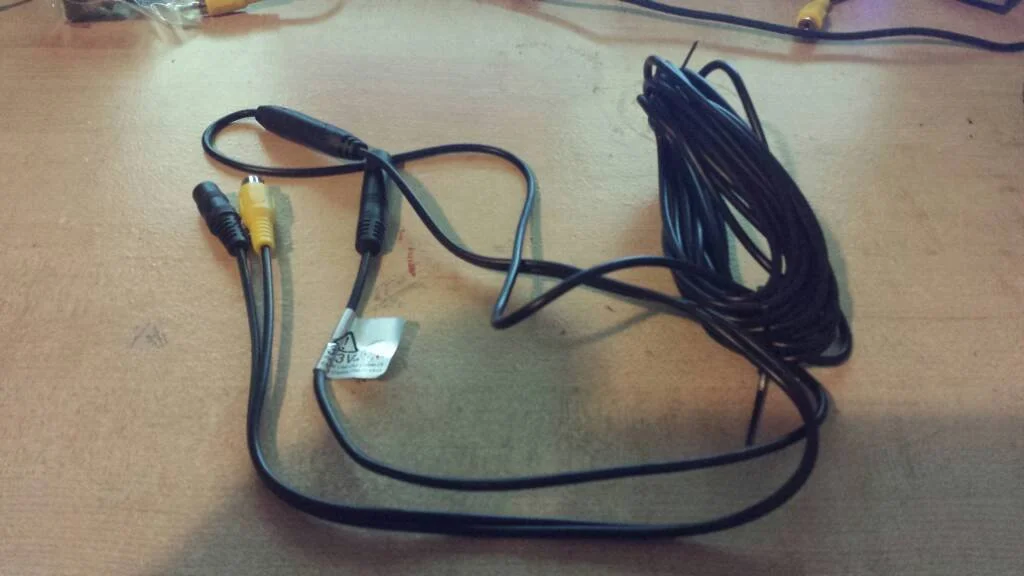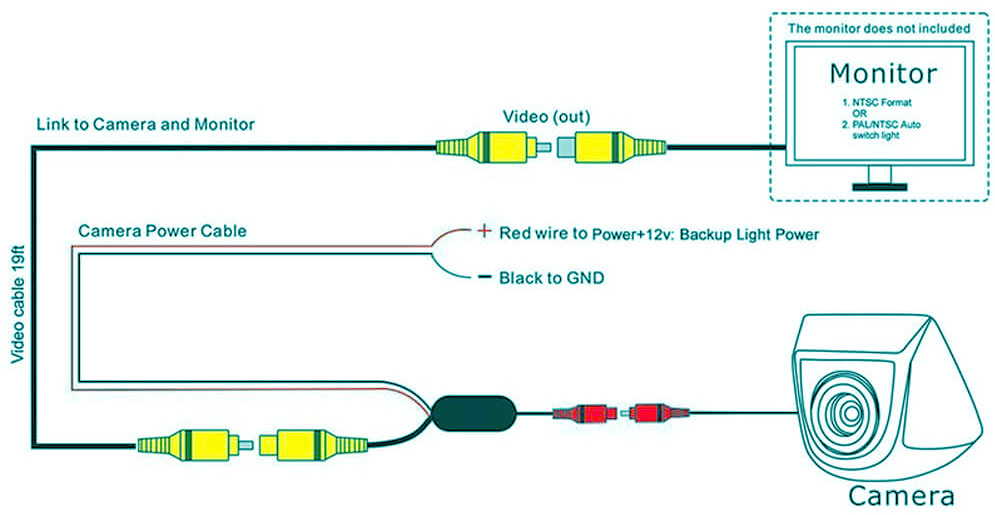I recently installed a backup camera in my car using an RCA connector for its simplicity and compatibility with my factory display. After disconnecting the battery and routing the cable, I was relieved to see a clear image when shifting into reverse. This upgrade has made reversing much safer and easier, enhancing my overall driving experience.
The significance of backup camera connectors in vehicle installations, detailing types like RCA, HDMI, and wireless connectors, along with their pros and cons. It emphasizes choosing the right connector based on compatibility, camera type, and power requirements. Proper installation ensures optimal performance and enhances vehicle safety.
Introduction To Backup Camera
Backup camera connector types play an important role in ensuring that your backup camera works properly in your vehicle. When you’re installing a backup camera, it’s important to understand the different types of backup camera connectors for seamless integration with your car’s display system.Each type of backup camera connector has specific characteristics that can affect installation and performance. Knowing these backup camera connector types helps you make informed decisions when choosing the right camera for your needs.
Whether you’re upgrading your existing system or installing a new one, being aware of backup camera connector types ensures you choose a compatible and efficient solution. In this guide, we’ll go in-depth about the different types of backup camera connectors and their benefits, helping you find the best option for your vehicle.
What Are Backup Camera Connectors?
Backup camera connectors are important components that enable communication between the backup camera and the vehicle’s display system. These connectors allow the transmission of video signals and, in some cases, power from the vehicle to the camera. Understanding backup camera connectors is essential for anyone looking to install, upgrade, or troubleshoot a backup camera system.

Here’s a detailed look at what backup camera connectors are, how they work, and their importance in the functionality of backup cameras.
1. Definition And Function
Backup camera connectors are special electrical connectors designed to connect the backup camera to the vehicle’s electrical system and video display. These connectors facilitate the transmission of video signals that show what the camera captures, allowing drivers to see the area behind their vehicle while reversing.
3. How Backup Camera Connectors Work
The way backup camera connectors function is by connecting the camera to the car’s dashboard. The camera turns on when the car is put in reverse, and it sends a video signal to the display via the connector. This signal moves through cables that are attached to the right connectors in wired systems. The video signal in wireless systems is sent from the camera to a receiver that is attached to the display.
Types Of Backup Cameras
- License plate cameras.
- RV backup cameras.
- Bumper mounted cameras.
- Side view cameras.
- Dashcam.
- Waterproof/Extreme environment cameras.
- Submersible underwater cameras.
Common Types Of Backup Camera Connectors
Backup camera connectors are critical to establishing a reliable link between the backup camera and the vehicle’s display system. Understanding the different types of connectors is essential to choosing the right camera and ensuring optimal functionality. Here are some common types of backup camera connectors, along with their features, advantages, and potential drawbacks:

1. Rca Connectors
- Advantages: RCA connectors are straightforward to install and require minimal tools. They are compatible with many aftermarket displays and factory-installed systems.
- Disadvantages: RCA connectors cannot deliver high-definition video quality compared to HDMI. Long cable runs can degrade the signal, resulting in a less clear picture.
2. Hdmi Connectors
- Advantages: HDMI connectors provide high definition video quality with minimal interference and excellent color accuracy. They can transmit both video and audio signals, reducing the need for multiple connections.
- Disadvantages: Installation can be more complicated than RCA connectors, requiring proper routing and secure connections. HDMI-compatible cameras and displays can also be more expensive than those using RCA connectors.
3. 4-Pin Connectors
- Advantages: Their compact size makes them easy to install in tight spaces, and in general, 4-pin systems are less expensive than high-definition alternatives.
- Cons: While adequate for basic use, the 4-pin connectors may not deliver the same video quality as HDMI or higher-end systems. They also may not be compatible with all vehicle displays, especially those that require high-definition input.
4. Wireless Connectors
- Advantages: Wireless systems make installation easier because there are no cables to run in the vehicle. They can be used in a variety of vehicles and are great for vehicles with limited wiring space.
- Disadvantages: Wireless systems may experience interference from other electronic devices, which may disrupt the video feed. Many wireless systems require battery power for the camera, which may require regular maintenance.
Choosing The Right Connector For Your Vehicle
Choosing the right connector for your backup camera system is important to ensure compatibility, functionality, and optimal performance. The choice can significantly affect the installation process and the overall effectiveness of the backup camera. Here are important factors to consider when choosing the right connector for your vehicle:

1. Compatibility With Existing Systems
- Factory-installed systems: If your vehicle has a factory-installed infotainment system, check the owner’s manual or consult with the manufacturer to determine which connectors are supported. This ensures that the backup camera will integrate seamlessly with the vehicle’s existing technology.
- Aftermarket displays: For aftermarket installations, make sure the display unit you are using is compatible with the connector type selected. Some displays may only accept RCA or HDMI connections, while others may support more advanced options.
2. Type Of Backup Camera
- Standard vs. High-Definition Cameras: Standard backup cameras often use RCA connectors, while high-definition models may require HDMI connectors. Be sure to match the connector type with the camera specifications to ensure the best video quality.
- Power Requirements: Different cameras have different power requirements, which may affect your choice of connectors. For example, some cameras may require separate power connections that are compatible with 4-pin connectors, while others may receive power through an RCA or USB connection.
Installation Tips For Backup Camera Connectors
Installing a backup camera involves connecting various components to ensure proper functionality and safety. Whether you’re upgrading an existing camera or installing a new one, following the right installation tips can make the process smoother. This guide will cover the essential tools you’ll need and provide a step-by-step installation process for the backup camera connectors.

1. Tools You’ll Need
- Screwdrivers: Both Phillips and flathead screwdrivers will be useful for removing and securing panels and connectors.
- Wire strippers and crimpers: These are essential for preparing and splicing wires properly. Wire strippers will help you expose the necessary length of wire, while crimpers allow you to securely attach connectors.
- Electrical tape: This is important for insulating exposed wires and preventing short circuits.
- Heat Shrink Tubing: For added protection of wire connections, heat shrink tubing can help effectively seal and insulate the connections.
- Drill with bits: A drill will be necessary if you need to make holes to mount a camera or run cables. Make sure you have the proper drill bits for your vehicle’s material.
2. Step-By-Step Installation Process
- Gather Information and Plan: Before you begin, read the manufacturer’s instructions for both the backup camera and the display system. Familiarize yourself with the layout of your vehicle and plan cable routing and mounting locations.
- Disconnect the battery: Safety is paramount. Disconnect the negative terminal of your vehicle battery to prevent any electrical short circuit during your work.
- Remove necessary panels: Use your screwdriver to carefully remove any panels from where the camera and display will be mounted. This may include the rear hatch trim or dashboard panels.
FAQ’s
1. What Type Of Cable Is Used For A Reverse Camera
4 pin aviation connector cables are considered to be one of the best connectors to use when it comes to reversing cameras. They are very durable and reliable and the waterproof seal between parts is absolutely the best in the business.
2. What Are Camera Connectors?
Camera connectors are components used to establish electrical connections between cameras and other devices, such as cables, power sources, monitors, recorders, or accessories.
3. What Are The Colour Codes For 4 Pin Reversing Camera Wiring?
Cut the 1M wire purchased from us in the middle and peel back the sheathing of the cable and separate the wires. You will see 4 wires inside. Red = +12V, Black = Ground, Yellow cover (around shielding) = Video, White = Audio
4. Are Backup Cameras Analog Or Digital?
Most aftermarket backup cameras are still using analog signals, which analog cameras use have much lower resolution and clarity than digital cameras. This is why an old N64 analog RCA signal looks crappy on a new digital TV, but anything with a digital HDMI port looks exponentially better.
5. What Is The Most Popular Type Of Connector?
The most popular kind of connector is the USB connector. In computer networking, it is utilised for USB hubs and USB cables. A USB hub can help you connect all of the USB devices on your desk together without requiring you to utilise several cords.
Conclusion:
Installing a backup camera connector is essential to enhance vehicle safety and improve the driving experience. By choosing the right connector and following a systematic installation process, you ensure optimal performance and functionality. This investment not only provides a clear view when reversing, but also contributes to safer navigation, making it a valuable addition to any vehicle.

